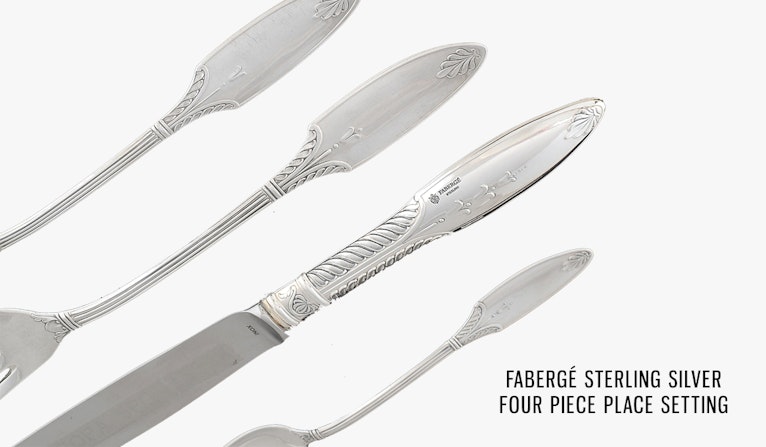Tips Of The Trade
Silver 101

Here’s a crash course in the world of collecting, caring for and consigning the precious metal. To help, we’ve enlisted the expertise of Lee Drexler, President of Esquire Appraisals, Inc. and an appraiser, consultant and authority on the subject. We asked Drexler to school us on all things silver, so save those EBTH.com search keywords and get your pencils out, because class is now in session.
First thing’s first. How do we identify silver?
Know your markings. Let’s go over the most common hallmarks one might come across: “925” will be from the United States and most of South America. The “Lion Rampant” will be from England, along with the King’s or Queen’s head and a letter that corresponds to the date it was made. A helmeted man is from France – “800” is from Italy or Germany – “835” is from Denmark, and “84” is from Russia.
The marking “EP” is electroplate and “EPNS” is also plate.


What do collectors need to know about silverplate?
When a thin layer of pure or sterling silver is deposited on the surface of a base metal, that’s called electroplate or silverplate.
What silver manufacturers should we look out for?
The top manufacturers are Tiffany, Buccellati, Bulgari, Gorham, George Jensen and Robinson. If it’s not by these makers, you’re pretty much paying the weight value, so go to auctions and buy things that you like and can use.


What pieces are the safest investments?
Those looking to invest might want to purchase silver coins instead of silverware. Silver coins might go up in value whereas ordinary silver that is not antique or by a well-known maker will only sell at weight.
Is there a time where a hallmark made all the difference in determining an ordinary piece from an extraordinary piece?
I recently did an appraisal for an Austrian woman who had a lot of silver, including a pair of candelabra with four crowns on them. In Europe, you were not allowed to use crown insignia unless you were royal, so as soon I saw these, I knew it was a royal piece. It was stamped with the English hallmark and maker’s mark, so I was able to determine the age and origin. After some research, I discovered it was part of a collection of six – the other four had sold at auction a couple of years earlier. At that time, the auction house discovered they had belonged to a German king who acquired them during a summer in London. The candelabra sold at Clarke Auction Gallery for a very high price.


What are high value pieces that someone might have in their home?
Coffee pots, pitchers, bowls, anything European with full hallmarks, or anything marked Tiffany or Gorham is collectible. There are miniature enameled clocks made in the late 19th and early 20th century that one might have and can be of value. The “84” hallmark is Russian silver, and Russian silver is very sought-after right now because it was all destroyed or lost during Communist reign. Depending on the maker, it might be extremely valuable.
What is the current status of silver as far as market value goes, and what time periods should we be looking for?
The older silver from the 16th to 18th century is certainly much more valuable, with the exception of some important Tiffany pieces that are 20th century. Fabergé was made up until the Russian Revolution in 1917. If you can find Fabergé, you’re in the money. But there isn’t much of that.


World War II Era Friedman Silver Co. Silver Plated Serving Pieces

Group of (5) 17th Century Polish–Lithuanian Commonwealth Silver Polker Coins

Antique Sterling Silver Butter Pats By Wood & Hughes

Sterling Silver Toothpick Holders by Baldwin & Miller

How do you store or care for silver?
People have these little felt bags they keep silver in, but it still tarnishes. Some people keep silver in zippered plastic bags because it locks out the air and doesn’t tarnish.
If you inherit silver, what should you do with it?
Get it appraised. Find out if it’s valuable or not. If you love it, keep it. If you don’t love it, sell it!








































